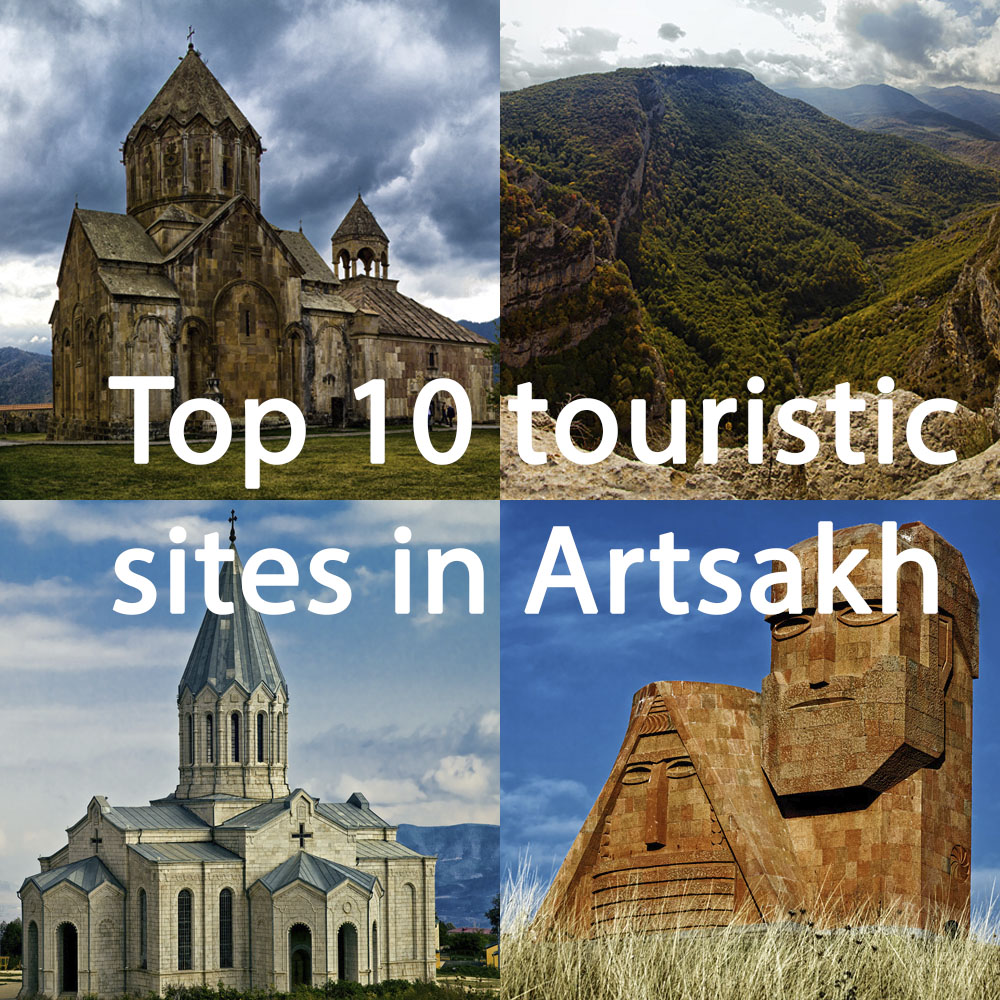
Although there are many more places to visit in Artsakh (Nagorno-Karabakh), we selected 10 sites that are worth your attention. If you plan to go to Artsakh, make sure you visit these gems:
Djermadjur
«Djermadjur» literally means «warm water». It is known for its numerous natural healing properties. Djermadjur is located 2200 meters above the sea level. There is a swimming pool where you can go for a swim. We recommend you to see by yourself to really appreciate the beauty and the uniqueness of this place.


Dadivank monastery
Dadivank (or Khutavank) is an Armenian monastery located at 1100 meters above the sea. The etymology of the first name could be linked to St Dadi, one of Thaddeus’ disciples, who preached Christianity in Armenia. The second version of the name certainly comes from «khut» (hill) and «vank» (monastery), which literally means a monastery on the hill.
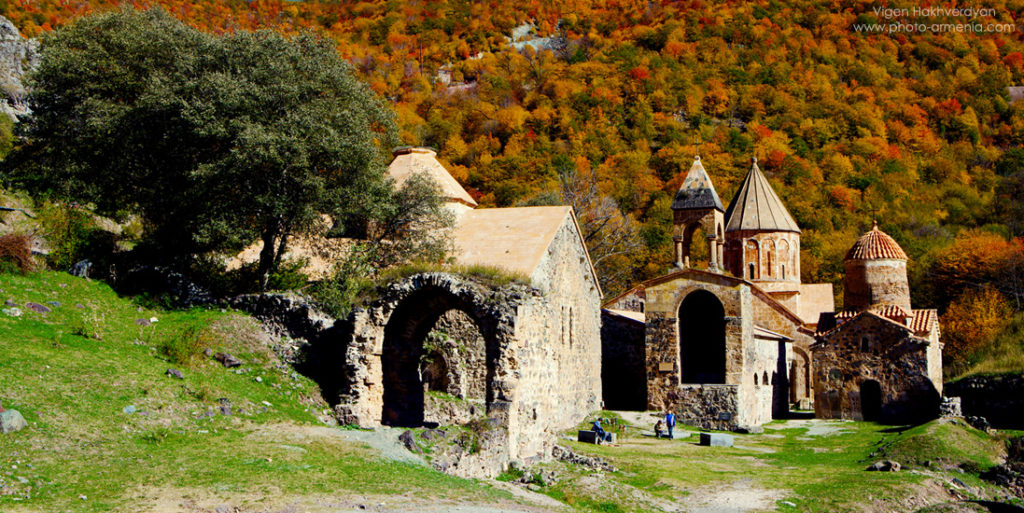
Fortresses
While in Artsakh (Nagorno-Karabakh), you definitely should see its fortresses: Tigranakert, Shushi-berd, Mayraberd and Khachakhaberd.
Tigranakert
Tigranakert is an ancient Armenian city founded in the 1st century BC. It was located in the Artsakh province of Great Armenia. It is one of the 4 cities named after Tigran II (Tigran the Great), the ruler of Great Armenia. According to Armenian scholars Tigranakert is the most ancient city situated in Artsakh (Nagorno-Karabakh).
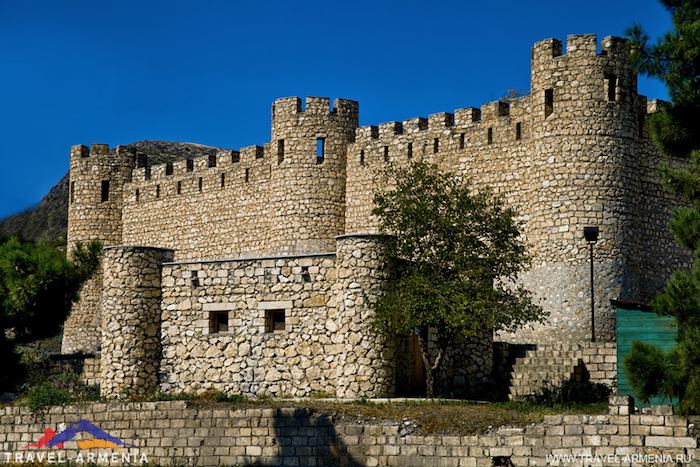
Shushiberd (The fortress of Shushi)
The fortress of Shushi (Shushi-berd) was first mentioned in XVIII century. According to one of the versions, the fortress is known as Shikakar, where the Arabs were defeated by the prince Sakhl Smbatian. The fortress has also been mentioned as Karaglukh, Kar, Shosh and Signakh Shosh. Archeological excavations confirmed another version: it was possibly built over an Armenian building.

Mayraberd
The fortress of Mayraberd, one of the largest ones in Armenia and Artsakh (Nagorno-Karabakh), is well preserved compared to others. It was built in XVIII century for better protection of the city of Shushi. If you manage to climb on the watchtower and look around, you will be able to understand the strategic importance of the fortress. It was restored in 2002.
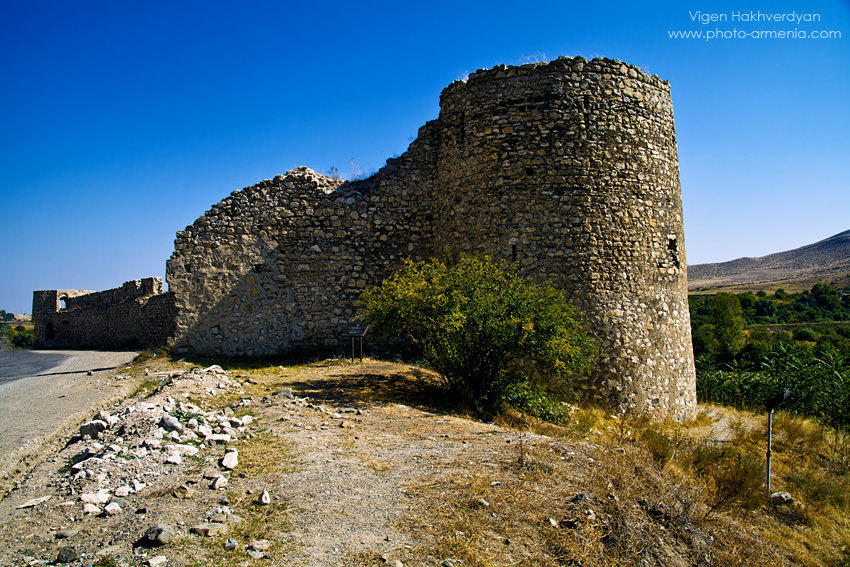
Gandzasar Monastery

«Gandzasar» literally means «the mountain of treasure» in Armenian. It was founded in XII century. The monastery remained a spiritual center thanks to the House of Hasan-Jalalyan. There was a school within the monastery, where the clergy would get an education. Numerous manuscripts were written and stored there.
In 2008, the «big marriage» was partly celebrated in Gandzasar: 137 couples out of 687 were married there, the remaining 550 were married in Ghazanchetsots Cathedral.

We Are Our Mountains Monument
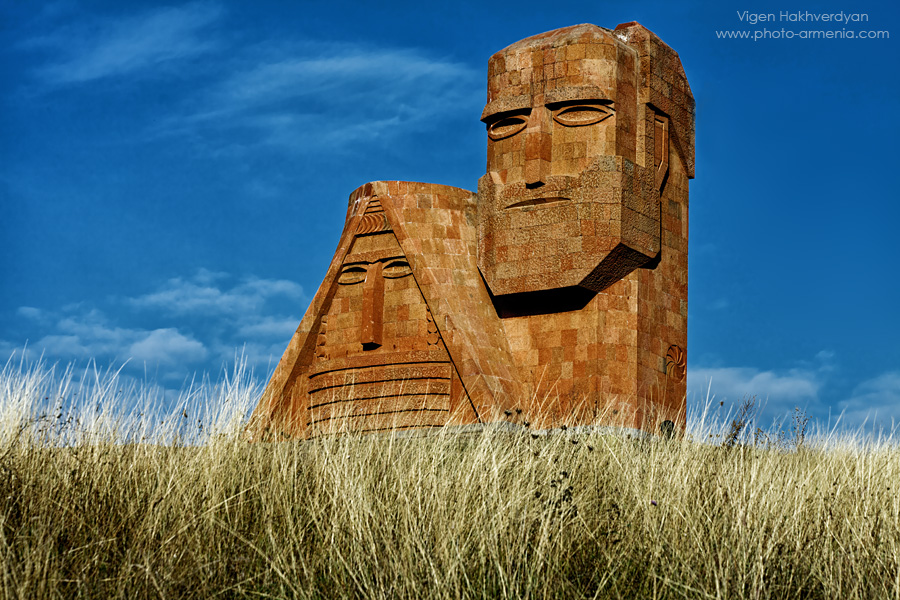
The We Are Our Mountains monument is one of the most renowned symbols of Artsakh (Nagorno-Karabakh) and is depicted on the armory of the Republic of Artsakh. The sculpture is located at the entrance of its capital city, Stepanakert. Locals also call it «Grandma & Grandpa» (?????—????? in Armenian). The monument was built in 1967 from red tufa by the sculptor Sargis Baghdasaryan. We highly recommend you to visit it.
Plane tree of Skhtorashen (Tnjri)

Tnjri is one of the oldest (2028 years old) and highest (more than 54 m.) trees in the CIS territory. It was also the case during the Soviet Union. You can fit more than 100 people inside the tree, the hollow of the trunk being 44 sq.m. The diameter of the trunk is 27 m. Locals say prominent figures such as the creator of the Armenian alphabet, Mesrop Mashtots, the writer Raffi, the poet and musician Sayat Nova came to relax under the tree.

Amaras Monastery
According to an Armenian historian of the fifth century, Pavstos Buzand, the monastery was founded in the fourth century by Gregory the Illuminator. His grandson, Grigoris is also known to be buried in the western part of the monastery. He is the first bishop of the Artsakh Diocese. Another interesting fact is that the first school in Artsakh was opened here in the fifth century by Mesrop Mashtots. It boosted the spread of Armenian writing in the region.
In the Middle Ages, Amaras Monastery was a cultural and spiritual center of Artsakh, but it was abandoned in Soviet times. It opened again in 1992 and has been an active monastery of the Artsakh Diocese since then.
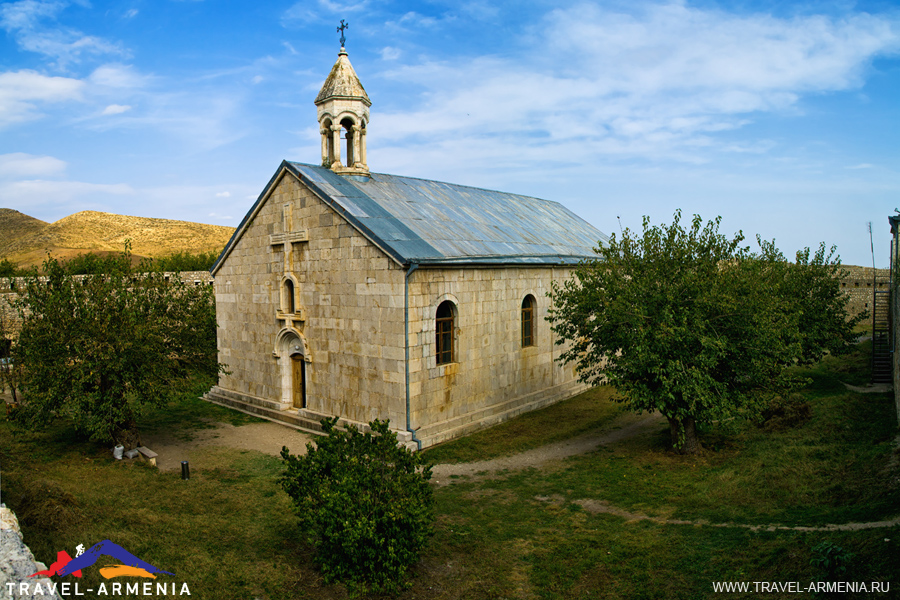
«Zontik» (or «Umbrella») Waterfall

The amazing «Zontik» waterfall is a very popular touristic place. You definitely should visit it. On the way to the waterfall, there is a gorge, where you can see dogberry trees. It is called «Zontik» («Umbrella» in English) Waterfall because the water cascades down the stone as rain would down an umbrella.
Hunot Canyon (Jdrduz)

We strongly recommend you visit Hunot Canyon. It astonishes with its beauty and unspoiled nature, surrounded by mountains. When the weather is hot, you can go for a swim in the river, the water is really refreshing. In summer, some tourists sleep in a tent to enjoy the unbelievable beauty. We can describe this place endlessly, it is better to see a picture, or even better to see it for yourself… and don’t forget to take with you a pair of some comfortable shoes.
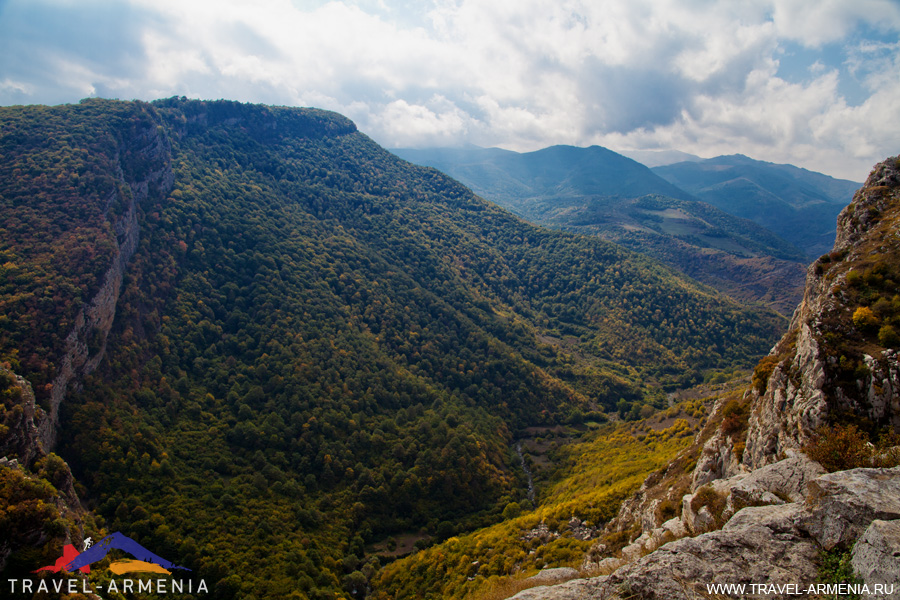

Ghazanchetsots Cathedral
Surb Amenaprkich Ghazanchetsots (Holy Savior Cathedral) is the main cathedral of the Armenian Apostolic Church in the city of Sushi. It is situated in the city center on a hill. This stunning cathedral was built in 1868-1887, on the grounds of a small church with money from inhabitants who immigrated to Shushi from the village of Kazanchi (Shakhkert), Nakhichevan. It is also one of the biggest Armenian churches (35m x 23m x 35m).

The cathedral was active until 1930. Then, it was partially restored in 1981-1988. During the period of war, sculptures of angels were destroyed and the whole cathedral served as a warehouse for weapons and ammunition. After the liberation of Shushi on 9th May, 1992, the restoration of the cathedral and the bells began. It was officially reopened and blessed on 19th of May, 1998, the day of the Transfiguration of Jesus.
Zhengyalov hats (????????? ???)

We couldn’t finish this article about Artsakh without mentioning the signature dish of this region. Zhengyalov hats is a flatbread with different varieties of herbs. The more you add herbs, the tastier zhengyalov hats will be. You can eat it with beer, tan or wine. Zhengyalov hats is considered to be the symbol of the cuisine of Artsakh. There are even festivals devoted to this dish. It is also included in the list of the intangible heritage of Artsakh. Long story short, you really have to taste it. Bon appetit!
We thank Vigen Hakhverdyan for help in preparing the publication.
© Autor: Kevorkov Georgiy
© Translate: Artem Asryan, Maral Firkatian






